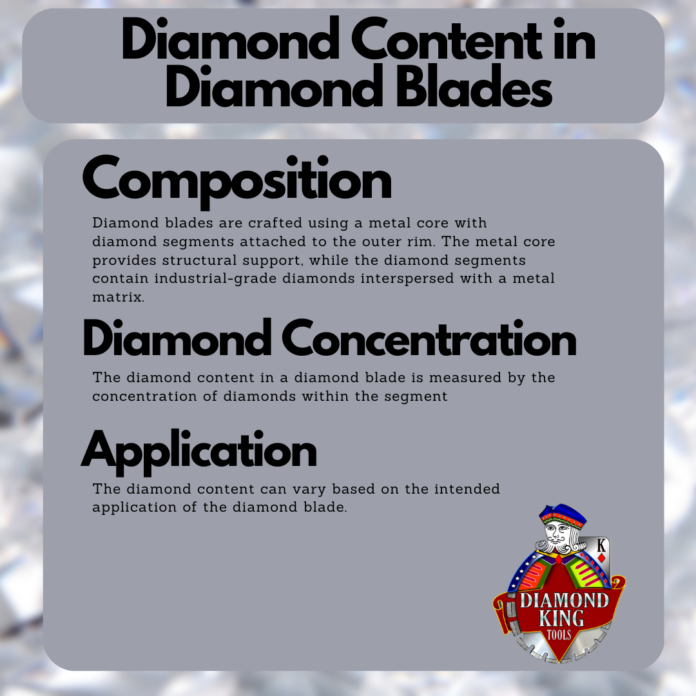Diamond blades are a critical tool in various industries, from construction to stone fabrication. Renowned for their cutting precision and durability, these blades owe their effectiveness to the diamond content embedded in them. We’re going to explore how much diamond content tis in a diamond blade and why this factor is crucial for their performance.
Understanding Diamond Blades:
- Composition of Diamond Blades: Diamond blades are crafted using a metal core with diamond segments attached to the outer rim. The metal core provides structural support, while the diamond segments contain industrial-grade diamonds interspersed with a metal matrix. These diamond particles are responsible for the blade’s cutting capabilities.
- Diamond Concentration: The diamond content in a diamond blade is measured by the concentration of diamonds within the segment. This concentration is expressed as carats per cubic centimeter (cpcc) and indicates the volume of diamonds in relation to the metal matrix. Higher diamond concentrations generally result in more effective and longer-lasting diamond blades.
- Different Blade Types, Different Diamond Content: The diamond content can vary based on the intended application of the diamond blade. Blades designed for cutting hard materials like concrete or granite typically have a higher diamond concentration. On the other hand, blades for softer materials may have a lower concentration to optimize performance.
- Premium vs. Standard Blades: Premium diamond blades often boast a higher diamond concentration, providing superior cutting performance and extended lifespan. These blades are designed for heavy-duty applications and demanding environments. Standard blades, while still effective, may have a lower diamond content, making them more suitable for less intensive tasks.
- Mesh Size Matters: Another factor influencing the diamond content is the mesh size of the diamonds. The mesh size refers to the size of the individual diamond particles. Finer mesh sizes result in a higher concentration of smaller diamonds, offering a smoother and more precise cut. Coarser mesh sizes, while still effective, may be more suitable for rough cutting.
- Optimizing for Material Hardness: The hardness of the material being cut is a crucial consideration when determining the appropriate diamond content. Softer materials may not require a high diamond concentration, while harder materials demand a blade with a more substantial diamond content for efficient cutting.
- Balancing Cost and Performance: While higher diamond content typically correlates with better performance, it’s essential to balance this factor with budget constraints. Assess your specific cutting needs and choose a diamond blade with an appropriate diamond concentration that aligns with both performance requirements and cost considerations.
In the world of diamond blades, the diamond content plays a pivotal role in determining their cutting efficiency and overall performance. Understanding the relationship between diamond concentration, mesh size, and intended application will empower you to choose the right diamond blade for your specific needs. That’s how much diamond content is typically in a diamond blade.
